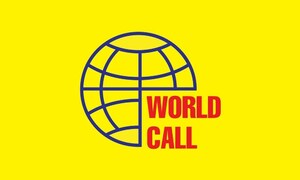During the past five years, the retail price of a regular cola bottle has increased by 55 percent. A kilogram of mithai at any of Karachi’s flagship sweetmeat stores costs at least twice as much as it did five years ago. Lahore’s celebrated naan khataiis now 90 percent more expensive than it was back then. The regular sized cup of doodh pattiat your roadside Quetta Chai hotels cost at least 2.5 times more than it did in 2018. Inflation in consumer goods that use added sugar – it seems - has outpaced both headline and food inflation over the same period.
Over the past two decades, Pakistan’s foods and beverage industry witnessed a silent revolution. Prices of refined sugar fell drastically in real terms domestically, despite two short periods (2009-11 and 2019-21) when prices rose abnormally due to a mismatch between supply and demand. Excluding two years, increase in daily wages income also consistently outpaced rise in sugar prices, raising the overall affordability of refined sugar and of consumer goods using added sugar as a major component.
Between mid-2000s and late-teens, Pakistan was sold as the poster child of large, young, rapidly urbanizing nation with a growing middle class to the fast moving consumer goods industry. And with growing urbanization comes higher discretionary spending on non-essential goods. Pakistanis became richer, may be not rich enough to match peer country four-wheeler ownership, but definitely rich enough to match the lifestyle of higher spending on beverages and snacking.
This revolution in consumer spending was made possible thanks to policy level decisions that were most likely driven by political incentives. Back in 2004, the military regime at the time lifted the ban on establishment and expansion of sugar mills into previously cotton belt districts of southern Punjab. During the 16 years between 2002 and 2018, sugar milling capacity in the country rose by 2.5 times, driving the expansion in value-added industry downstream.

Pakistan’s sugar industry deservedly gets bad rap for many reasons. It is a politically controlled industry that is closed to competition; firms maintain their dominance by virtue of a license raj that restricts new entrants; even within the industry, firms fend off competition by maintaining raw material procurement territories where they rarely compete for supply (sugarcane farmers); under reporting of production volume has been rife during most of this period; many players engage in transfer pricing by selling produce at lower price to group companies in bottling and confectionary industries; in the past, payment to suppliers (cane farmers) were habitually and criminally delayed; industry remains protected against foreign competition through prohibitive tariffs on import; reduced sales tax (no longer exempted); and, most of all, using the sugar mill to gain political influence and power in home district.
But these same perverse incentives and protections also made possible gains in productivity that enabled the revolution in the downstream industry. For context, area under sugarcane cultivation rose by only 20 percent over the last 25 years, while crop yield per acre rose by 40 percent. Meanwhile, refined sugar produced by the milling industry rose by 2.11 times during the same period. Effectively, this means that higher resource allocation to sugarcane crop explains no more than 70 percent of the rise in refined sugar output. The remainder unexplained 40 percent rise in output was a result of the capex investment in plant efficiencies that improved sucrose recovery, lowering the cost of production per unit. Number of cane crushing days (operating days) fell from an average of 140 in 1990s to 100 days today. Politically driven shift of the industry to more fertile agricultural land enabled a productivity spurt in the industry, making discretionary spending for millions of Pakistanis more affordable.
But that long stretch now seems to be increasingly over. Even as sugar production in Pakistan – for all its faults – improves in export competitiveness, the terrifying erosion in purchasing power of Pakistanis over the last five years will inadvertently translate in lower discretionary spending on consumer goods. Couple this with higher taxes imposed on beverage, fruit, and confectionary industries proposed in recent annual federal budgets means demand for consumer goods using added sugar may only suffer in near to medium term.
But that need not mean an end to the sugar industry’s endlessbonanza of the last 20 years. The more efficient players in the industry already have a taste of competition in the export market, particularly those integrated in the downstream ethanol export business. Moreover, because the cane based sugar industry across the world enjoys more or less similar levels of regulatory protection, a pivot towards export need not incur anti dumping measures under WTO. But hold on.
Critics might argue that the world market doesn’t have space for a fresh supplier with a puny exportable surplus, given Brazil and India supply as much as 80 to 90 percent of traded refined sugar. True, but the low value add crystalized sugar is not the only market Pakistani millers could explore.
Given the efficiency and productivity gains in milling technology achieved by Pakistani players over the past 20 years, they could also potentially explore the raw sugar tolling market, where raw sugar syrup is imported from surplus markets for further processing & value addition, for onwards export to deficit markets such as Central Asia and Middle East.Many of the top 20 mills in the country not only have world competitive plant technology, but also enjoy significant economies of scale that will only magnify from round the year plant operation. Moreover, a pivot towards raw sugar tolling will also ensure that the industry need not increase area under cultivation of the water intensive sugarcane crop, at the expense of competing crops, and perhaps even bring it down as well.
Pakistan’s sugar industry has enjoyed remarkable returns over the past two decades when adjusted for industry risk. If the erosion in purchasing power of local consumers persists, it may no longer be able to do so, perhaps even leading to a fall in per capita sugar consumption in the country. The number of players is currently too high to sustain at a time of stagnating demand. It is high time the industry explores the export market for continued growth, while the perversely motivated protections are still in place.























Comments
Comments are closed.